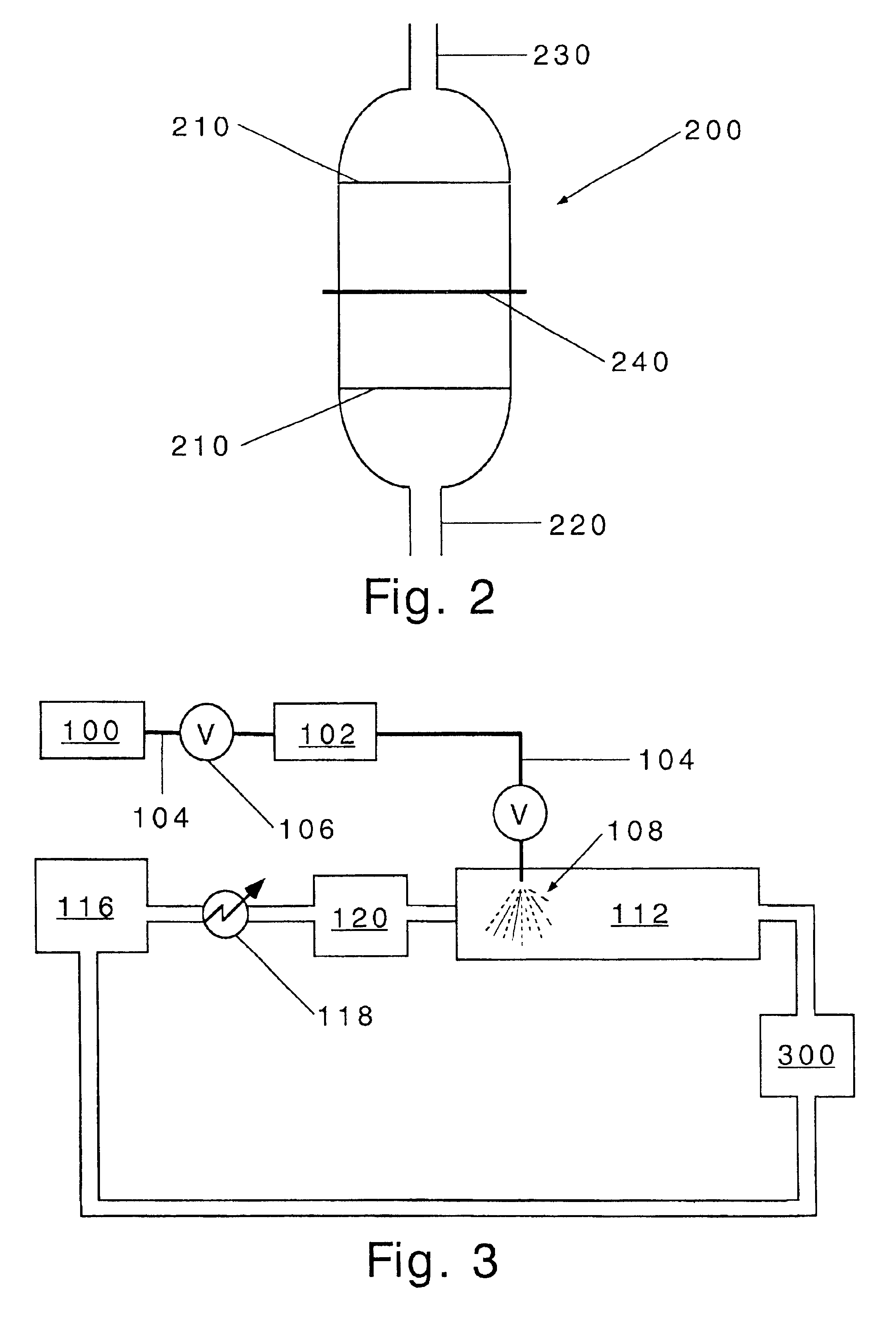Process for production of nanoparticles and microparticles by spray freezing into liquid
a technology of nanoparticles and microparticles, which is applied in the direction of drying solid materials, drug compositions, metabolic disorders, etc., can solve the problems of thermal or mechanical degradation of api, accelerate degradation of active ingredients, small primary particles or highly porous microparticles, etc., to enhance the efficacy and efficiency of effective ingredients, enhance the effect of efficiency and/or efficacy of effective ingredients
- Summary
- Abstract
- Description
- Claims
- Application Information
AI Technical Summary
Benefits of technology
Problems solved by technology
Method used
Image
Examples
example 1
An aliquot of 0.1 g bovine insulin was dissolved in 20 ml HCl (pH=2), the solution was then titrated by 0.1 N NaOH to pH 7.4. The feed solution was then atomized using an ISCO pump by spray freezing into liquid nitrogen. The nozzle used was polyetheretherketone tubing with a diameter of 63.5 μm. The flow rate was 14 ml / min at 4000 psi. The frozen particles were collected and dried in a tray lyophilizer. The products were characterized by different techniques, and the results are shown in Table 2. The resulting particles were highly porous. The SFL process did not influence the chemical stability of insulin as indicated by no change in the level of A-21 desamido insulin (Table 2). The SFL process decreased the level of covalent insulin dimer (Table 2). The mean particle size diameter as determined by time-of-flight measurement was 5.06 microns. SEM photographs reveal that the particle is an aggregate composed of small domains of insulin.
TABLE 2The physical and chemical characteristic...
example 2
The SFL insulin powder was prepared according to the procedure outlined in Example 1 with same formulation. The SFL insulin powder was stored at −4° C. The samples were taken out at 6, 12 and 24 weeks. SEM photographs showed that the particles were still porous after 24 weeks storage. The percentage of A-21 desamido and covalent insulin dimer in the sample are summarized in Tables 3 and 4.
TABLE 3The percentage of A-21 desamido in the samples that wasstored for different time periods.Initial6 weeks12 weeks24 weeksSFL insulin powder2.452.723.043.03Bulk insulin2.462.612.72
TABLE 4The percentage of covalent insulin dimer in the sampleswhich were stored for different time periods.Initial6 weeks12 weeks24 weeksSFL insulin powder0.50.551.471.25Bulk insulin0.51.181.15
example 3
Aliquots of 50 mg sCT, 10 mg tyloxapol, and 250 mg lactose were dissolved in 40 ml of deionized water to make the SFL feed solution. Then the feed solution was pressurized using an ISCO syringe pump and atomized by spray freezing into liquid nitrogen. The nozzle used was polyetheretherketone tubing with inner diameter of 63.5 μm. The flow rate was 14 ml / min at a 4000 psi. The frozen particles were collected and dried in a tray lyophilizer. The physical properties are summarized in the Table 5.
TABLE 5The physical characteristics of SFL calcitonin powder whichwas sprayed with tyloxapol and lactose.BET surface areaMean Particle(m2 / g)Diameter (μm)SFL calcitonin19.1610.49powder
PUM
| Property | Measurement | Unit |
|---|---|---|
| Diameter | aaaaa | aaaaa |
| Diameter | aaaaa | aaaaa |
| Size | aaaaa | aaaaa |
Abstract
Description
Claims
Application Information
 Login to View More
Login to View More - R&D
- Intellectual Property
- Life Sciences
- Materials
- Tech Scout
- Unparalleled Data Quality
- Higher Quality Content
- 60% Fewer Hallucinations
Browse by: Latest US Patents, China's latest patents, Technical Efficacy Thesaurus, Application Domain, Technology Topic, Popular Technical Reports.
© 2025 PatSnap. All rights reserved.Legal|Privacy policy|Modern Slavery Act Transparency Statement|Sitemap|About US| Contact US: help@patsnap.com



